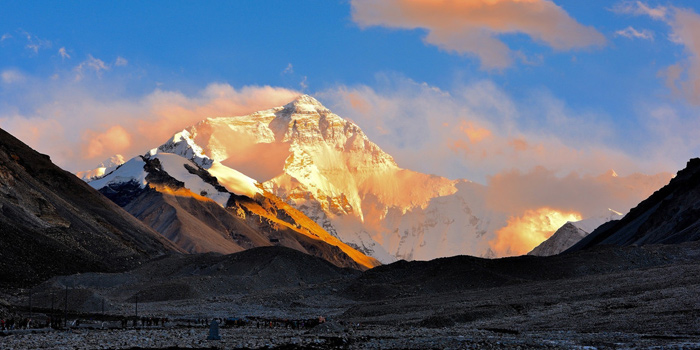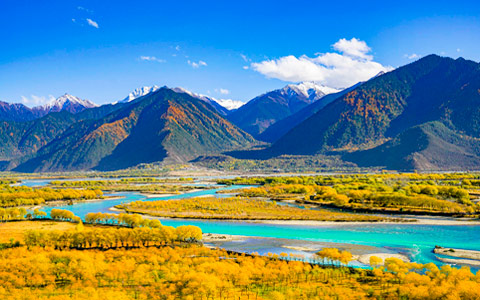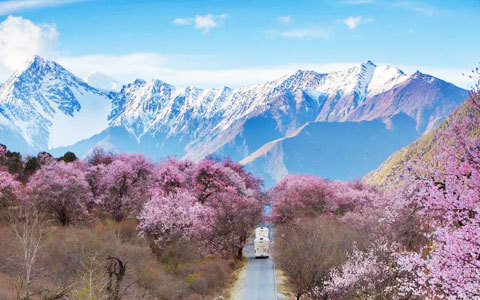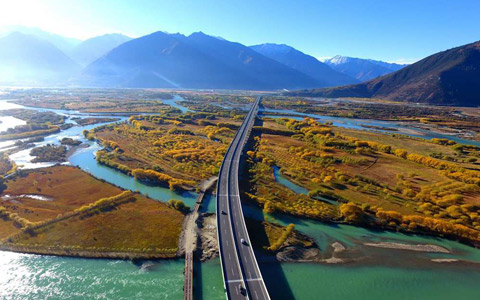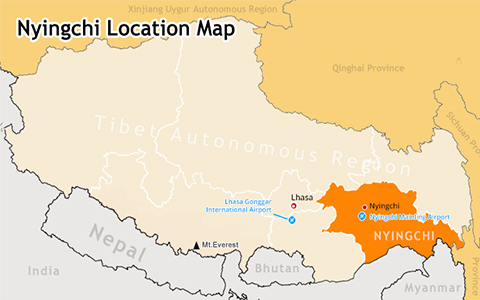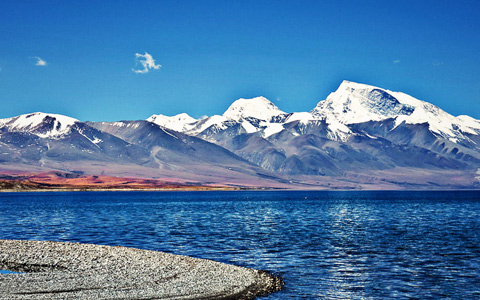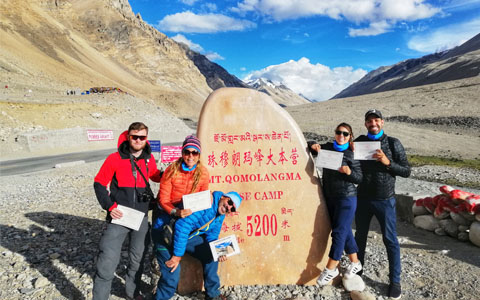Eastern Tibet: Where is Eastern Tibet and How to Plan an Eastern Tibet Tour?
Eastern Tibet, which is still known as Kham to many Tibetans, is a land that is set apart from the rest of the Tibetan plateau. With a completely different climate, not to mention different flora and fauna, this magical region of Tibet is more like the Swiss Alps than the mighty Himalayas. One of the three traditional regions of ancient Tibet, which includes Amdo and U-Tsang, Eastern Tibet is much lower in altitude than the rest of the plateau, giving it a much milder climate.
While it is not as popular as the main central and western areas of Tibet, it has its own unique charm, and is an amazing place to visit, filled with long mountain ridges and deep lush valleys. The culture of Eastern Tibet is still hugely Tibetan, with a strong devotion to the Buddhist faith and a way of life that has been less influenced by outside forces and westernization. Planning a trip to Eastern Tibet may be a little harder than for the central and western regions, but it is more than worth it for the stunning scenery and the unique cultures.
 Where is Eastern Tibet, Geographically?
Where is Eastern Tibet, Geographically?
 Major Attractions in Eastern Tibet
Major Attractions in Eastern Tibet
 Best Time to Visit Eastern Tibet
Best Time to Visit Eastern Tibet
 The Best Way to Experience Eastern Tibet
The Best Way to Experience Eastern Tibet
Where is Eastern Tibet, Geographically?
While Kham covered much of Eastern Tibet, and even extended into what is now mainland China in Yunnan and Sichuan Provinces, the eastern part of the Tibet Autonomous Region (TAR) is made up of the Prefectures of Nyingchi and Chamdo. Covering around a quarter of the total area of the TAR, this stunningly beautiful area of the plateau is still part of Tibet and requires the same permits and passes to visit.
 (Simple click to enlarge the map)
(Simple click to enlarge the map)
Different administrative divisions in Tibet
Lying to the east of Lhasa and to the west of Sichuan Province of China, nyingchi covers the southern and western area of Eastern Tibet, while Chamdo covers the northern and eastern parts of this small region. To the west, Nyingchi is bounded by Lhasa and Shannan Prefectures, and to the east by Sichuan Province, while to the south lies the disputed area of Arunachal Pradesh. A major area for tourism from mainland China, Nyingchi is a mountainous region, with many low-lying valleys with fertile soil that makes it perfect for growing the wheat and vegetables that cannot be grown at higher altitudes on the rest of the plateau.
To the west of Chamdo lies the Tibetan prefecture of Nagqu, while to the north Chamdo is bounded by Qinghai Province and to the east by Sichuan province. While equally as mountainous in its southern areas bordering on Nyingchi, the central and northern area of Chamdo is less rugged, and is formed by more high rolling hills and flat plains in the long and wide valleys that cover the entire area.
Major Attractions in Eastern Tibet
Both of the prefectures in Eastern Tibet have a wealth of attractions for tourists to the area, and include some of the most stunning and amazing sights on the plateau. Nyingchi is well known as the Swiss Alps of Tibet, and has many of the same features that can be found in the Alps in Europe. The beautiful lake at Basum Tso is one of the most stunning in the world, and the Lulang Forest is an awesome sight, a natural museum of plants that resembles a fairytale land of myth and mystery. Mount Namche Barwa, the highest mountain in Nyingchi, is also the most beautiful Snow Mountain in China, as well as being the eastern anchor of the mighty Himalayas and the easternmost mountain over 7,000 meters.
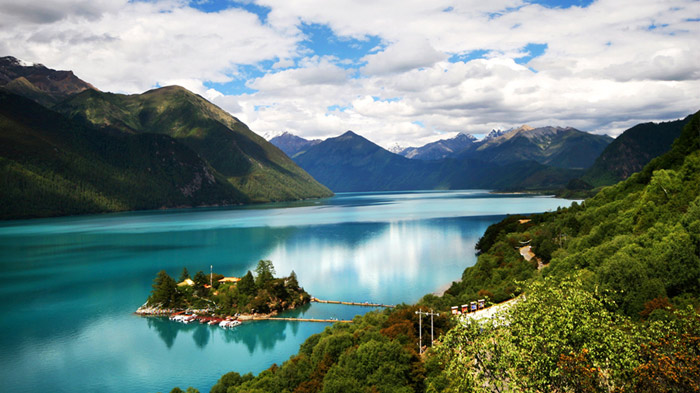 The beautiful Basum Tso Lake is one of the major attractions in Eastern Tibet.
The beautiful Basum Tso Lake is one of the major attractions in Eastern Tibet.
The mountain also forms part of another of Nyingchi’s great attractions, the Yarlung Zangbo Grand Canyon, the largest canyon in the world, dwarfing the Grand Canyon in the United States with a depth of more than 6,000 meters at its deepest point. And to top it all off, Nyingchi is the home of the King of Cypress, a huge cypress tree that is believed to pre-date even the Gautama Buddha, and is linked to the founder of the ancient Bon faith, Tonpa Shenrab Miwoche, who is believed to have lived around 2,500 years ago.
Chamdo also has a great many awesome and inspiring sights and attraction, not the least of which is the sacred Meili Snow Mountain, one of the most sacred peaks in the world. Towering over the landscape at a height of 6,740 meters, this beautiful peak is covered in snow all year round, yet the area around it has an amazing diversity of plants that provide habitats for a great many wild animals. Chamdo is also the route of the Ancient Tea Horse Road, which stretched for more than 4,000 kilometers across Sichuan, Yunnan, and Tibet. The route for travelers trading tea for horses in Tibet was used for more than 1,200 years and outlasted the Song, Yuan, Ming, and Qing Dynasties of ancient China.
One of the most ancient archaeological sites in Tibet lies in the Chamdo area, and is known as the Karub Ruins. Believed to be the original birthplace of the Bon faith, thanks to religious artifacts that have been unearthed on the site, the ruins date back to the Paleolithic Period, around 5,300 years ago, and pottery found there shows that the civilization that inhabited the area were on the edge of the Neolithic period of Human history.
Best Time to Visit Eastern Tibet
Eastern Tibet, while having a slightly different climate to the rest of the plateau, is still a four-season land that is affected by the southwest monsoon season. In the east of Tibet, the monsoon is worse than in central and western Tibet, as the land is lower in altitude and is not as protected by the Himalayas. Summer, therefore, is not always the best time to travel, despite the landscape being lush and green, since the monsoon rains are harsher than in the rest of the region.
The ideal time to travel into eastern Tibet is in the spring, from April to June and the autumn from September to December. In the spring, the weather is dry and cool, warming up as it progresses towards summer, and it is the time of the annual Peach Blossom Festival in Nyingchi, when the entire area is covered in an abundance of stunning peach tree flowers.
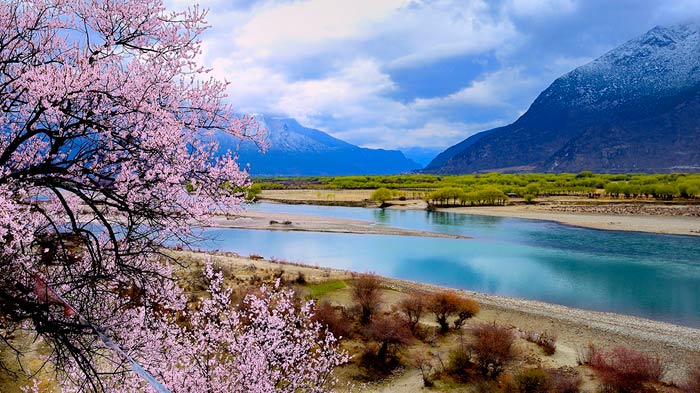 The Peach Blossom Festival usually lasts from mid-March to mid-April.
The Peach Blossom Festival usually lasts from mid-March to mid-April.
In the autumn, it is the time when the leaves are turning to red and gold and falling to the ground, covering the forest floors with a colorful blanket of dry leaves. The weather is milder now, with summer over, and the rains have almost died off, leaving drier ground but still having lush green vegetation in the fields and meadows.
Eastern Tibet can be visited in winter, since the weather is not as harsh as in western Tibet, though there is a chance of heavy snow in the high mountain passes. Winter is the main part of the dry season in eastern Tibet, and the weather, while warm is very dry, with some strong winds. Moisturizers and lip balm are essential at this time of year, and while it may be warm during the day, the nights can get very cold.
The Best Way to Experience Eastern Tibet
If you are planning to travel to the eastern areas of Nyingchi and Chamdo, then you have two options for getting there. From the east or from the west.
Travel from Chengdu to Lhasa via G318 Highway
The route from the east starts in Chengdu, the capital of Sichuan Province, and takes you on a long and awesome car journey to Chamdo and Nyingchi, following the routes of the G318 and G317 National Highways. Few people take the G317, as it is a more roundabout route, taking you high through Chamdo and into eastern Nagqu Prefecture, and the main road to the eastern area of Tibet is along the famous Sichuan Tibet Highway.
Traveling this route means starting in Chengdu, and taking the G318 all the way to Nyingchi, passing through some of the most stunning landscapes in the world, and traveling along lush green valleys and over high mountain passes. The route has been named as one of the most dangerous roads in the world, but this is changing as the road through the mountains is being upgraded, with most of the route to Lhasa along the Sichuan Tibet Highway now being asphalted to make driving safer and easier.
 (Simple click to enlarge the map)
(Simple click to enlarge the map)
Sichuan Tibet Highway Map G317&G318
It is a long and arduous drive from Chengdu to Nyingchi and Chamdo, and one that takes around seven or eight days, depending on where in Eastern Tibet you are intending to travel. Driving the route is tough, even for an experienced driver, as the roads are full of hairpin bends, switchbacks, and steep climbs to high mountain passes, with just as steep descents on the other side.
The road, while hard to drive, is the most stunningly beautiful route to take, traveling through some of the most beautiful countryside in Tibet, passing high mountains, such as Minya Konka and Namche Barwa, as well as such spectacular sights as the Midui Glacier, the Lulang Forest, Ranwu Lake, the Yading Nature Preserve, and the small but picturesque town of Xinduqiao, a paradise for photographers.
Travel Tips: If you plan to enjoy the thrilling road trip from Chengdu to Lhasa via G318 or G317 HW, do consult your tour operator in advance, as the travel policy for international tourists in eastern Tibet often changes from time to time.
Travel from Lhasa to Nyingchi, Bome and Rawok Lake
Traveling in the other direction is just as beautiful, as you pass out of the Lhasa Prefecture soon after leaving the Tibetan capital, and into the stunning landscape of Nyingchi Prefecture. The landscape slopes downward as you move east, from more than 3,000 meters above sea level just outside Lhasa to around 800 meters at the lowest point.
The route from Lhasa flows the G318 National Highway, part of the Sichuan Tibet Highway, and runs along the Lhasa River Valley for many miles, passing Mila Mountain through a high pass and into Nyingchi Prefecture. Following the Niyang River Valley, the road continues on towards Bome, along the side of one of the most beautiful rivers in Tibet. You will also pass along close to the birthplace of the famous 33rd king of Tibet, Songtsen Gampo, as well as the Guru Rinpoche’s Cave, a site where Padmasambhava used to meditate when traveling through the region.
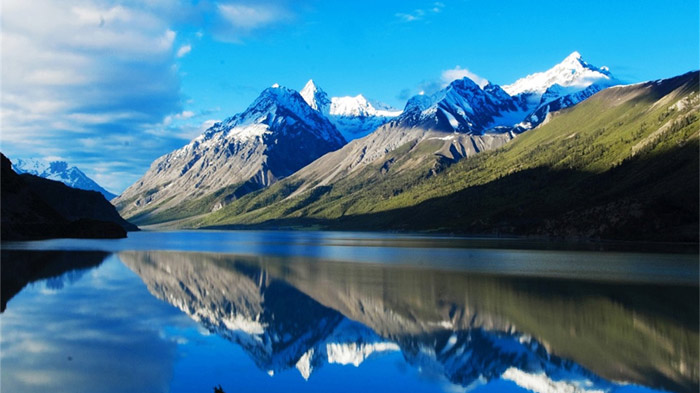 Rawok Lake is one of the most beautiful rivers in Tibet at the route from Lhasa to Nyingchi.
Rawok Lake is one of the most beautiful rivers in Tibet at the route from Lhasa to Nyingchi.
The route from Lhasa to Bome covers a distance of around 630 kilometers, which would take around 13 hours of constant driving. However, for most people traveling this route, it is a two-day drive, exploring the stunning locations along the way.
Do Plan ahead for Visiting Eastern Tibet
It is a good idea to plan well in advance when arranging your trip to Tibet’s eastern areas, as there are a lot of regulations when traveling inside the TAR. The first thing to know is that independent travel in Tibet Autonomous Region is prohibited, and you will need to book a pre-arranged tour with a registered Tibetan tour operator. As one of the largest tour operators for Tibet, we can help you with all of your planning and arrangements, from the first query on traveling to Tibet to the final arrangements, your hotel booking, and even your travel arrangements.
Permits are also required for travel to Tibet, and these are all obtained by us on your behalf, as international travelers are not permitted to make their own applications. Proof of the booking of a pre-arranged tour is required to apply for the various permits and passes to travel into and around Tibet. Travel to Nyingchi requires the Tibet Travel Permit, for travel into Tibet and around the Lhasa area; the Alien’s travel Permit, for all travel into the opened areas outside Lhasa; and the Restricted Areas Permit, for travel to military restricted areas such as Chamdo and Nyingchi.
International travelers are also not permitted to travel into the TAR in February and March, as it is the time of the Tibetan New Year, known as Losar. It should also be noted that, at this time, international travelers are not permitted to take the road trip along the G318 National Highway to Lhasa from Chengdu. However, travel from Lhasa to Nyingchi is permitted, with the correct permits.
Photogallery of Eastern Tibet Nyingchi Travel and Tours
 On the way to Nyingchi
On the way to Nyingchi
 Lulang Forest
Lulang Forest
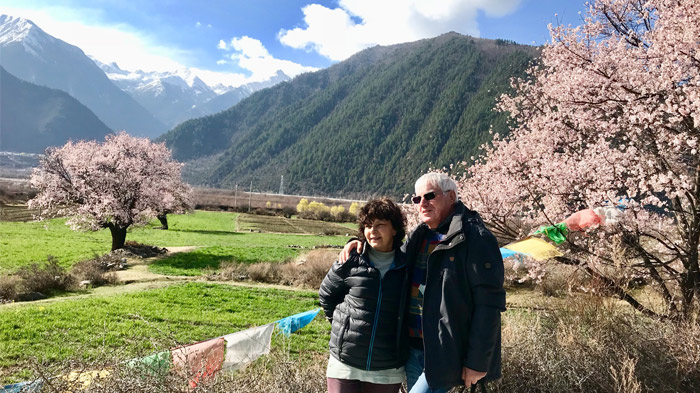 Enjoying the Nyingchi Peach Festival
Enjoying the Nyingchi Peach Festival
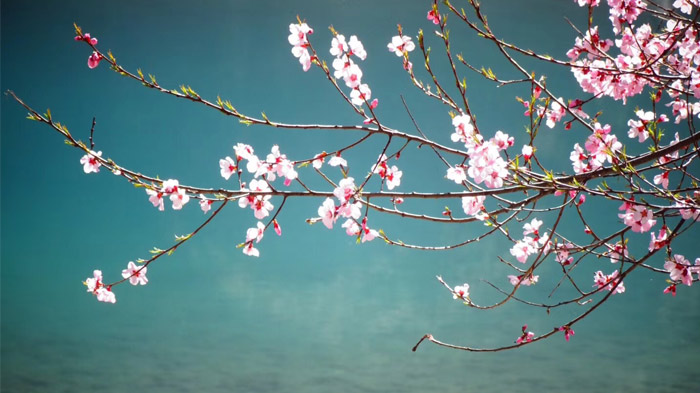 The beautiful peach blossom at Nyingchi Peach Blossom Festival.
The beautiful peach blossom at Nyingchi Peach Blossom Festival.
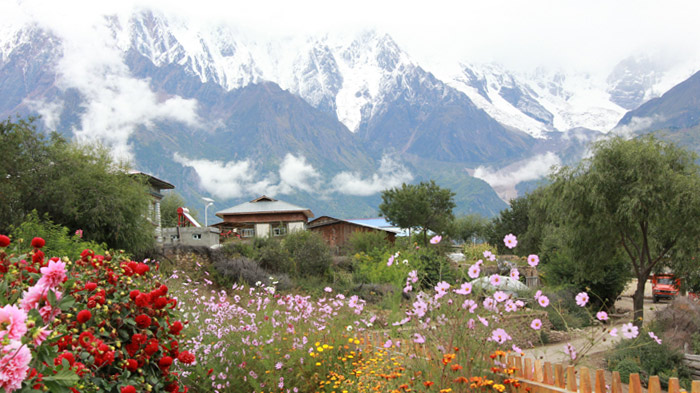 Suosong Village in Eastern Tibet.
Suosong Village in Eastern Tibet.
 Namcha Barwa Mountain in Eastern Tibet.
Namcha Barwa Mountain in Eastern Tibet.
.jpg) Enjoying the peaceful lake view at Lulang Forest.
Enjoying the peaceful lake view at Lulang Forest.
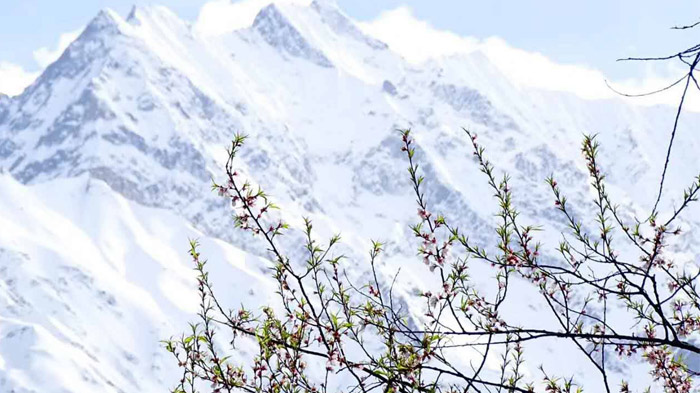 Nyingchi in winter.
Nyingchi in winter.
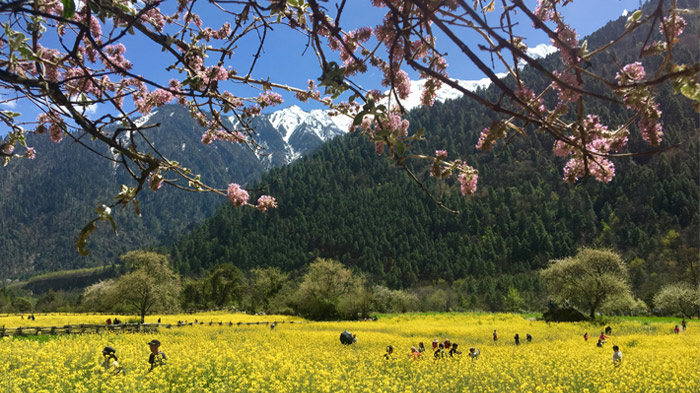 Nyingchi in spring.
Nyingchi in spring.
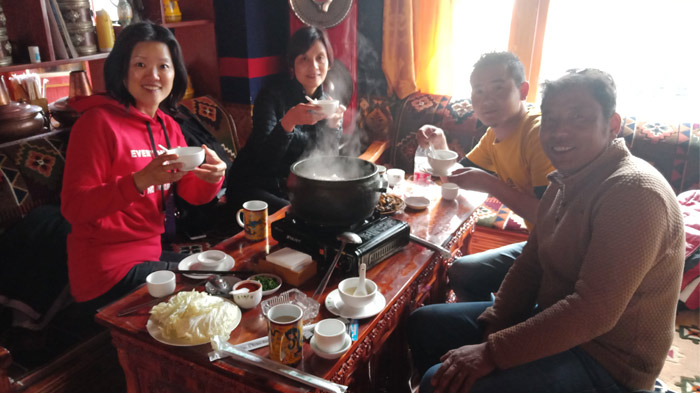 Enjoying the Stone-pot Chicken at Lulang, Nyingchi.
Enjoying the Stone-pot Chicken at Lulang, Nyingchi.
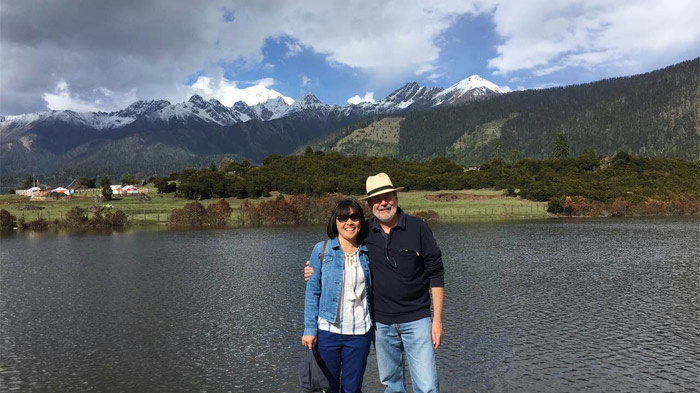 Enjoying the beautiful scenery at Basum Tso Lake.
Enjoying the beautiful scenery at Basum Tso Lake.
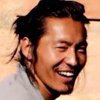
Energetic, responsible and reliable, Sonam is a guide with more than seven years experience informing visitors about heritage sites and attractions places in Tibet.
Related Articles & Posts
Most Popular Tibet Tour Packages
-

Lhasa - Gyantse - Shigatse - Everest Base Camp - Shigatse - Lhasa
USD939
View Details -

Lhasa - Gyantse - Shigatse - E.B.C - Saga - Kailash Trek - Darchen - Lake Manasarovar - Saga - Gyirong - Tingri - Lhasa
USD2059
View Details -

10 Days Lhasa to Everest Base Camp and Namtso Lake Small Group Tour
Lhasa - Gyantse - Shigatse - EBC - Shigatse - Lhasa - Namtso Lake - Damxung - Lhasa
USD1289
View Details -

8 Days Driving Across Himalaya Overland Adventure from Kathmandu to Lhasa
Kathmandu - Gyirong - Everest Base Camp - Tingri - Shigatse - Gyantse - Lhasa
USD1069
View Details -

4 Days Lhasa Impression Small Group Tour: Explore the Heart of Tibet and Mingle with the Locals
Lhasa
USD509
View Details -

Lhasa - Gyantse - Shigatse - Everest Base Camp - Gyirong - Kathmandu
USD979
View Details -

Lhasa - Gyantse - Shigatse- Lhasa
USD799
View Details -

13 Day Lhasa, Mt. Everest, Mt. Kailash, Lake Manasarovar and Kathmandu Adventure Tour
Lhasa - Gyantse - Shigatse - EBC - Saga - Darchen - Kailash Trek - Darchen - Saga - Gyirong - Kathmandu
USD2059
View Details


.jpg)




